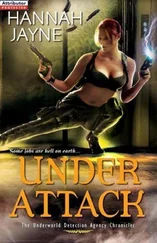Existing tunnels below the streets of Luton in Bedfordshire were strengthened, as was the Ouseburn Culvert in Newcastle upon Tyne, while the Victoria Tunnel in the same city was also used as a shelter. In Runcorn, on Merseyside, where leakage from chlorine gas holders was considered a particular potential hazard in a raid, a network of underground tunnels was constructed. During raids on Plymouth, people trekked across the fields to take shelter inside a tunnel hewn in a quarry. It was cold and dark and water ran down the walls, but it was a haven, and every Sunday the local vicar conducted a service there. In Bristol, an old railway tunnel that had been used to take goods from the port into the city was taken over by ‘men, women and children huddled together sleeping on mattresses, planks or straw. Some had corrugated iron sheets or pieces of sacking and canvas placed overhead to catch the water that dripped from the rocky roof of the tunnel. The air was thick with the fumes of oil stoves, oil lamps and various odours of cooking food … When the Corporation employees opened the doors in the morning, the stench and fumes came from within like a fog. It was a picture of Dante’s Inferno. Many of the people were nervous wrecks. People stayed in the tunnel by day, afraid to lose their places. There was hardly any room between the rough beds. Some performed their natural functions alongside their beds. It was unbelievable that people could be driven by fear to endure such conditions.’
Conditions were as bad, if not worse, in London’s most notorious shelter: the Tilbury in Stepney. For the Daily Herald journalist Ritchie Calder, it was ‘not only the most unhygienic place I have ever seen, it was … definitely unsafe … yet numbers as high, on some estimates, as 14,000 to 16,000 people crowded into it on those dreadful nights when hell was let loose on East London … People of every type and condition, every colour and creed found their way there … men from the Levant and Slavs from Eastern Europe; Jew, Gentile, Moslem and Hindu. When ships docked, seamen would come to royster [sic] for a few hours. Scotland Yard knew where to look for criminals bombed out of Hell’s Kitchen. Prostitutes paraded there. Hawkers peddled greasy, cold fried fish which cloyed the already foul atmosphere. Free fights had to be broken up by the police. Couples courted. Children slept. Soldiers, sailors and airmen spent part of their leave there.’
‘It was an enormous place,’ remembered Robert Baltrop. ‘I’ve seen figures like 6,000 sheltering in it every night. It wasn’t even properly underground, [much of it] was simply a surface building, and it was almost like a village; people sold things, ladies of the street carried on their business there … a whole nightlife went on in the Tilbury, all through the blitz.’
The Tilbury, situated off the Commercial Road, was part of Liverpool Street station goods yard, and was owned by two different bodies. On one side lay vaults and stores; on the other was an underground loading yard, partly below ground, and above it a massive warehouse supported on steel girders. The vaults had been taken over by Stepney Council as a shelter for 3,000 people, but the Home Secretary refused permission for it to requisition the warehouse and the loading bays – by far the larger part. However, the site had been an official shelter in the First World War, and ‘It was known to older people as “the place to go”.’ And that is what happened. When the desperate hour came, they crowded there from all parts of east London, often coming from miles away. The limited capacity of the official section was quickly filled, and thousands overflowed into the rest of the site. There was nothing the owners could do to prevent the torrent of humanity which took possession. The borough council disclaimed responsibility for those who took shelter in the ‘unauthorised’ areas, on the grounds that it had been refused powers and would be trespassing on private property. Even the police could not at first gain access, except when called in by the harassed policemen of the company concerned.
As long as Calder lived, he wrote, he would
never forget the stampede when the gates were flung open and the swarming multitude careered down the slope, tripping, tumbling, being trodden on, being crushed and fighting and scrambling for the choice of sleeping berths – in the valleys between the gigantic bales of newsprint. Expectant mothers and even children were crushed.
Sanitation barely existed. The only provision was for a handful of workmen usually employed there. The result was that the roadways were ankle deep in filth, which was trodden into blankets on which people were to sleep. Great stacks of London’s margarine were stored there. Hundreds of cartons were hopelessly fouled every night. It was over a fortnight before the margarine began to be moved out, by the intervention of the Ministry of Food. People slept among the filth. They slept in the dust between the rails and on the cobblestones of the roadway. They slept on the wooden bays amongst the food. It was appalling.
Hilde Marchant, who visited the Tilbury for the Daily Express , was equally appalled: by the sour smell of rancid margarine that pervaded the vaults, by the strong odour of horse in the loading bays, by the ‘confused mass of bodies strewn everywhere’, but above all when she came to ‘the canvas partitions at the end. These were the latrines, twelve chemical lavatories helped by a few buckets for the children. I went into the six latrines reserved for women. They were overflowing, and a woman worker was standing over the door, saying they could not be used any more that night.’
Euan Wallace, Regional Commissioner for the London Civil Defence Region, thought it was ‘no use spending a lot of money on things like water closets’, as the government lacked the power to requisition the part of the Tilbury owned by the railway company, and in any case, ‘It does seem … very doubtful whether it is worth putting new wine into such a very old bottle. It can never be anything but a very indifferent shelter and it presents peculiarly difficult health and sanitation problems.’ However, by mid-October ‘The Prime Minister has been hunting Morrison very hard on the Tilbury shelter question,’ reported Wallace, and though ‘the City was being unreasonably sticky on providing basements in commercial buildings’, accommodation was eventually found so that 4,000 shelterers could be moved from the railway-owned part of the shelter, and conditions improved for those who stayed.
Until then, though, it was largely due to individual unofficial initiatives that things got better. There had not been even a first aid post in the unofficial half of the Tilbury, but a local Jewish doctor volunteered his services and spent his evenings attending to the shelterers’ needs, then ‘slept the night at his self-appointed post. There were women there – genuine motherly souls with a passion for well-doing – who spent the whole twenty-four hours, for weeks on end, ministering to this vast unruly family. They were self-appointed shelter marshals, without authority and without resources. It was they who brought urns of fresh water into the unofficial shelter, rationing the water as sparingly as though they were the keepers of an oasis in the desert … Any minister or official or influential visitor who ventured into that shelter would be button-holed. With evangelical fervour, they would be told of the miseries these people had to endure, of what grand people they were if only they had a chance, and a whole catalogue of all the things that needed to be done.’
It was not only officials who beat a path to the Tilbury shelter: it soon became a tourist attraction for people from ‘up West’ to gawp at the hellish conditions their fellow Londoners were suffering a few miles away. Rachel Reckitt was in charge of the emergency Citizens Advice Bureau set up at Toynbee Hall in Whitechapel – a ‘university settlement’ where middle-class workers lived among the poor, hoping to share knowledge and culture, and alleviate the poverty of their neighbours – to offer advice and practical help to East Enders suffering during the blitz. In October 1940 she had a ‘night out with [the distinguished American lawyer] Mrs Goodhart [who] wanted to see the Tilbury shelter, so, as it was no good early in the evening [when no shelterers would have arrived] I offered to take her later. She said should we go and get some dinner at the Savoy, or have it at Toynbee? I believe she would have liked Toynbee, but saw I wouldn’t, so we had a drive round Wapping and Shadwell and the Isle of Dogs … it looked lovely in the fading light, especially the river. Wapping church and the school have gone … all but the Church tower … Then we had a good dinner at the Savoy, with Leslie Howard [who played Ashley Wilkes in the film Gone with the Wind , which had opened in London a few months previously, and who would be killed when the plane in which he was a passenger was shot down in June 1943] and Anthony Asquith [the film director ‘Puffin’ Asquith, son of the former Liberal Prime Minister] at the next table … Afterwards we went back to Stepney to the Tilbury shelter. Entry there is by pass only as they, naturally, dislike sightseers (especially those who come East after a good dinner to see how the poor live!). However, as I know the wardens, I was able to get Mrs Goodhart in. I especially wanted her to see it in case she goes to America; as she will be asked to lecture there [and] it would be very bad if she had to admit she’d never seen a shelter.’ The next month, Rachel Reckitt was taken on
Читать дальше












